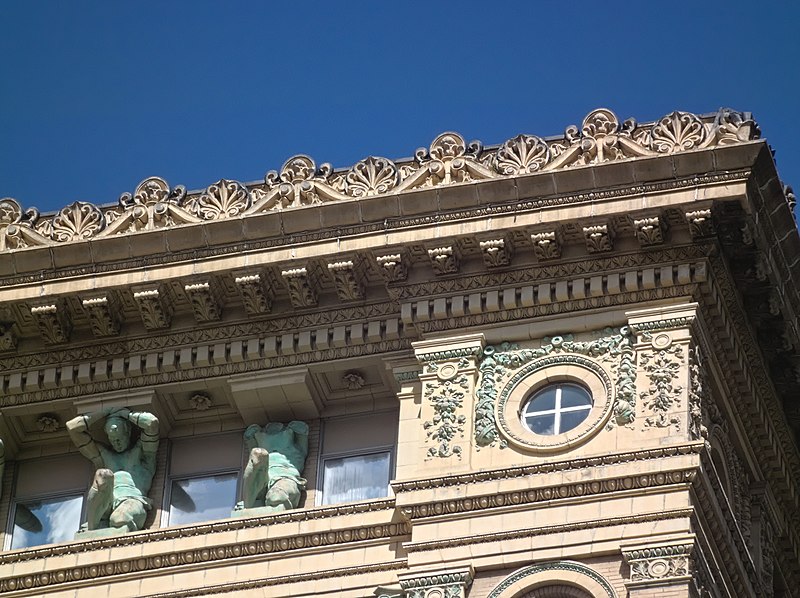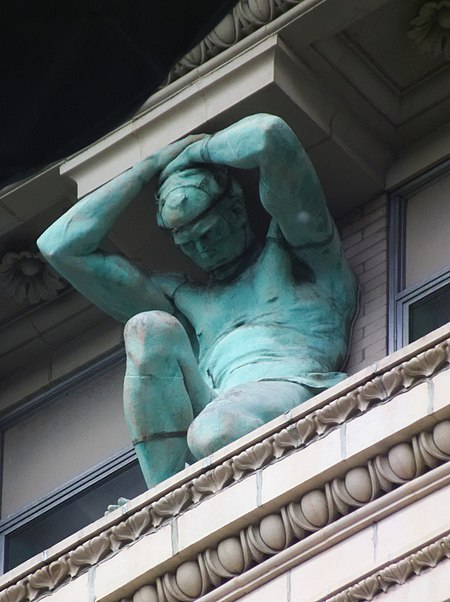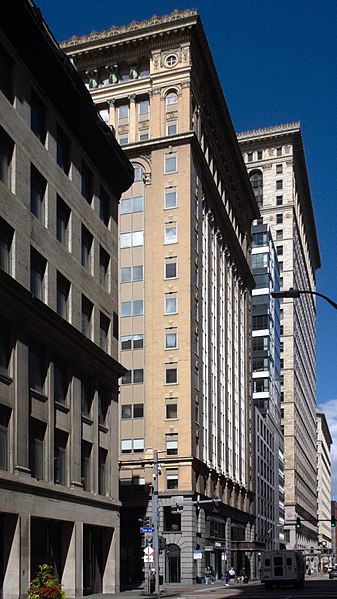
Designed by Longfellow, Alden, and Harlow, this was our first steel-cage building and thus the seed from which dozens of skyscrapers grew.

Designed by Longfellow, Alden, and Harlow, this was our first steel-cage building and thus the seed from which dozens of skyscrapers grew.

A “telamon” is a male human figure used as an architectural support. Most architectural references regard the term as interchangeable with “atlas” (of which the plural is “atlantes”), but some working architects seem to have distinguished the two, “telamones” being youthful, beardless figures, and “atlantes” being older bearded figures with pronounced or exaggerated musculature, like the atlantes on the Kaufmann’s clock. At any rate, the 1896 Park Building, which is our oldest standing skyscraper (if we don’t count the seven-storey Consetoga Building as a skyscraper), has thirty of these figures supporting the elaborate cornice. The sculptor seems not to be known, which is a pity, because these are exceptionally fine work. The architect was George B. Post, who also designed the New York Stock Exchange and the Wisconsin state capitol, among many other notable buildings.


One of these fellows has lost his head, which you might do, too, if you had to hold up a cornice like that for 126 years.



At some point in the middle twentieth century it seemed like a good idea to someone to fill in the shaft of the building with modernistic columns of windows. It was not a good idea.

An image from an advertisement in the National Vaudeville Artists’ Annual for 1928. You and your dancing poodles are invited to shop here. This building is now under renovation, and with the removal of some later accretions the shadows of the Frank & Seder signs are visible (see the recent photos here).

In the little corner of downtown Pittsburgh near First Avenue there are still some half-blocks that never entered the skyscraper age. Here we can see some of the humbler pre-skyscraper commercial architecture of Pittsburgh. The first floor of the front of this building has been heavily altered, probably by someone who wanted to make it look more Victorian and ended up making it look more 1978. But the rest of the building is a typical small Italianate structure of the 1870s.

Kaufmann’s was the Big Store, but Frank & Seder, facing Kaufmann’s across a whole block of Smithfield Street, was hardly small. The building is now under restoration.

The restoration has peeled away later accretions, and we can see the shadows of an old sign at the corner of Forbes Avenue.

Two layers of ghost signs still memorialize the old department store to pedestrians on Fifth Avenue.


Compare the photograph to this illustration of the store in 1927.